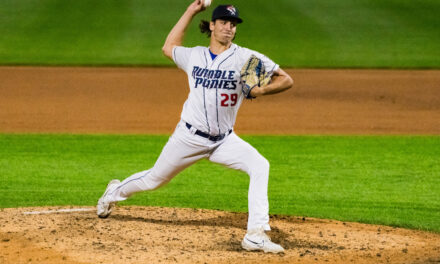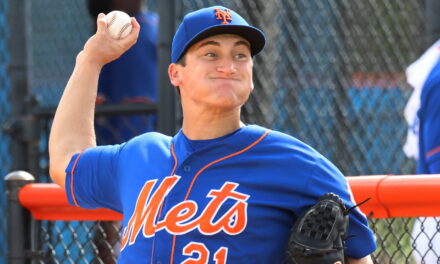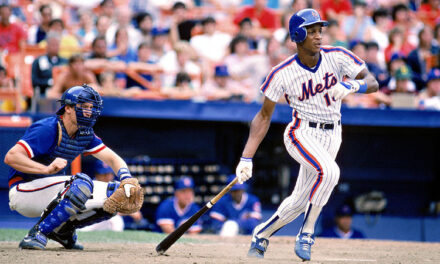
With the addition of Russell Carleton to the New York Mets Analytics Department, here’s an interview we did with him last Summer. We hope you enjoy.
The analytic movement in Major League Baseball continues to gain further acceptance, as all thirty clubs employ statisticians and analysts to crunch the numbers in order to make better baseball decisions.
We’ve witnessed teams alter their methods with the increased amount of data available at their fingertips, which includes defensive alignments, bunting, platoons, and utilizing their best relievers in the highest leverage situations, just to name a few.
Services such as Statcast, Sports Info Solutions, Baseball Prospectus, and FanGraphs offer various insights into sabermetrics; helping to further the conversation and bring awareness to understanding the game in a new light.
Over the last few years, fans of baseball literature have been given various perspectives of the shift in baseball analytics, from Brian Kenny’s book, Ahead of the Curve, to Keith Law’s, Smart Baseball. Each of these titles offers its own insight and analytical approach to baseball-related data, however, a simple yet often afterthought when trying to understand the logic behind sabermetrics is the human element aspect.
Author Russell A. Carleton looks to bridge that gap.
Carleton, a veteran baseball writer whose work has appeared in Baseball Prospectus for over eight years, penned a new book called The Shift: The Next Evolution in Baseball Thinking. In it, Carleton brings his background in clinical psychology paired with his keen knowledge in analytics to pose questions of various in-game scenarios along with a long-term outlook.
Why didn’t David Ortiz bunt down the third baseline with a major pull shift in the infield? Why don’t third-base coaches send more runners home on a sacrifice fly? How can we better evaluate the role managers play? What’s the expected value of a particular situation to make better in-game decisions? How do organizations go about ensuring their minor league players are given resources in case they need assistance in personal matters?
These are just a few of the questions Carleton poses in his book, along with detailed analysis and data to back up his claims and findings.
Carleton writes in an engaging and exuberant way, with many of the chapters filled with personal anecdotes from Carleton’s own life, which helps tie into his studies. This approach helps make Carleton’s arguments clearer for the uninitiated or fans that are looking to gain a better understanding of sabermetrics.
With the amount of information available to the masses, it’s important that we’re able to discern how to ask the right questions and make the best decisions for maximizing the most wins for a team. Carleton offers insightful analysis into making better baseball decisions, but with the human element attached.
I had the privilege of speaking with Carleton in mid-March where we discussed the development of his book, how he incorporated his clinical psychology background into his work and several of his chapters.
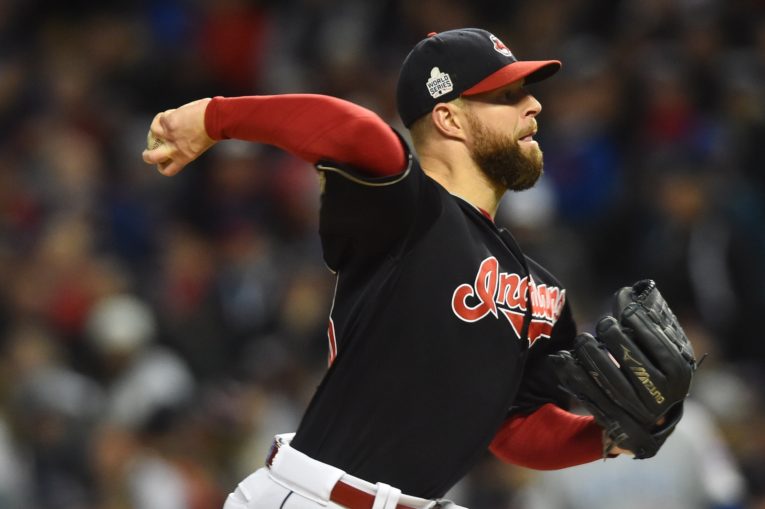
MMO: What made you write the book and what was the process like for you?
Carleton: After the 2016 World Series it was November and I was depressed because my beloved Indians had lost the Series. November is National Novel Writing Month and I said, ‘I’ll never write a novel, but I’ve always had the idea of writing a book.’ I even tried about ten years ago and I found some of the old drafts and they were awful. I decided that I’ve always had this dream and if not now, then when?
I’ve been doing baseball writing for about ten years at this point so I had a lot of stuff that I had been writing about and my rough drafts. The process was kind of tying a lot of that stuff together that had been kind of scattershot over the years.
MMO: One of the big stigmas you address right away in your book is about the ongoing acceptance, or lack thereof, by some of sabermetrics. One of the common objections and one that you expand upon is the “you never played” statement. Can you talk a little about how you counter with those who are skeptical with advanced metrics, including this particular objection?
Carleton: My secret superpower is that I’m trained as a clinical psychologist. I have been in the therapy room and I have talked to people, trying to help them out. Occasionally you get people who say, “You haven’t lived my life, you don’t understand.” Well, I don’t in the sense that I’ve never done it myself, but we all have to do things where we’ve kind of learned to take somebody else’s perspective in life, so I had some training in that.
Somebody might say, “You’ve never played.” What they’re really saying is that they can’t even put it into words what they understand about baseball that you’re just not picking up on. I’ve gotten that before and I’ll say, ‘Well, help me understand.’ You give them a couple of minutes to really formulate the words and they bring up something and they say, “Here’s what I’m trying to say.”
Usually, they have a pretty good point and I’ve had those situations and I think it calls for a little bit of humility around that.
It’s not that I have all of the answers or that someone else has all of the answers. It’s something in the therapy room you kind of learn to do and when you do it you’re a much better person for trying to help people out and piece out what’s really going on.
MMO: You come from a background in clinical psychology as you mentioned, and one of the things I loved about your book was how you interspersed personal anecdotes and stories. Did you plan from the beginning to write the book that way?
Carleton: Self-disclosure in the therapy room is something that I always tried to integrate into my work. I don’t see patients anymore but when I did it is a way of being able to say, ‘Look, I may not have gone through something exactly like this, but I’ve been through something myself.’
I talk about that in the book when I was in high school and I was on a quiz show. There was a team that kind of bent the rules and found an advantage and basically, we lost because they figured it out before we did. I talk about that and part of it was just well, I’m never going to write a memoir so it’s a chance for me to do that.
I tried to pick stories from my life that demonstrated okay, this is what I’m talking about and kind of serve as a way to get people ready for the baseball stuff that was going to happen. Plus, hopefully, it was kind of fun to read.
The idea of self-disclosure was that I’m a real person and not some monster out to destroy the game of baseball. I’m just a guy that’s been through my [own] life and all I can say are these are my observations. Maybe it’s a lot easier to take when it’s just another person on the other side of the keyboard.
MMO: I think a big part of the appeal to your book is going to be how you intertwined both the analytics and the personal human element side of it. By doing so the numbers don’t appear as “scary” to those who are either on the fence with sabermetrics or are wanting to get a better understanding of it.
Carleton: And this is part of why I wanted to write the book. The stereotype is you’re just interested in numbers, you’re not interested in the human element of it. Well as a psychologist that’s what I do and when I was pitching the book to my publisher I said, ‘I don’t know if this is even a baseball book as much as it’s a book about people that just happen to be wearing baseball hats.’
This is a book where I think if you dig deeper into the numbers you’ll find that baseball has a lot of places where very, very human things happen. Some of them are kind of silly human things and some of them are places where yeah, we can play the game of baseball better.
I think that marriage of the human element and the numbers especially within the game of baseball has gotten a bad rap and it was one of the things I was consciously shooting for as I was writing it.
MMO: You write extensively about expected value and probabilistic thinking. Can you talk a bit about expected value and what fans should understand about that concept when it comes to making sound baseball decisions?
Carleton: One of the things about expected value is that we’re not trained to think about that in sports. If you think about the example that I use, if I know that there’s nobody on and two outs or the bases are loaded and nobody out, before I know what happens in those two innings I know which one I would pick if I had a choice. I think it’s pretty obvious which one you’d pick, but sometimes the bases are loaded and nobody’s out and you don’t score. Sometimes there’s nobody on and two outs and you put together a four-run rally. It doesn’t make my initial preference for bases loaded and no one out false, it’s just that sometimes you just kind of get a bad outcome.
What you want to think about is, what is the most likely thing to happen? What is the value of that? In baseball, value is denominated in runs. What is going to produce the most runs or wins or whatever it happens to be for me? The thing about expected value is that it describes a lot of the decisions people have to make in baseball. We have to make a decision before we know what the outcome will be. Whether that’s in an in-game decision of should I bunt here? Should I not? A general manager’s decision of should I trade for that starting pitcher and give up my top two prospects?
Some of those decisions that happen a lot in baseball I think that expected value is the key to really understanding how you should approach those because you’re going to get burned on some of them. Some of them end up being wrong but if you make the decisions that have a higher expected value time after time after time you’re eventually going to end up ahead.
Even something as simple – and this one I can’t take credit for – but the sacrifice bunts that we’ve grown up and been taught about. Look at how many runs a team scores on average, with a runner on first and nobody out versus the number of runs a team scores with a runner on second and one out. When you think about it you can either swing away with that guy on first or bunt him to second and accept the out.
Well, it turns out that you actually score more runs with a runner on first and nobody out, so you might as well swing away. That was one of the first applications in expected value to baseball, and this was done thirty years ago by two guys named Pete Palmer and John Thorn. They found that and ever since it’s been, why do we still see bunting if what you’re effectively doing is taking runs off the board for yourself in the long run?

MMO: In one of your chapters you discuss the value that a guy like Ben Zobrist brings to a team; with the ability to play multiple positions. Can you talk a little about the value a guy like that brings to a team, and why versatility should be something that’s more readily looked for? For the Mets, a guy like Phil Evans comes to mind, who they are also teaching to catch. Should clubs be looking more towards this model of developing multi-positional players?
Carleton: Whether they like it or not they’re starting to, you’re seeing more of those guys. I called Ben Zobrist the patron saint of those sorts of guys who just kind of zoom all over the field. It’s happening for a couple of reasons. One is that pitching staffs are getting bigger, so you need guys who are position players either on your bench or if they’re starting they can switch to another position. Then you have someone from the bench fill in, based on needing to cover eight different positions possibly with three bench players, [so] there’s that aspect of it.
The Zobrist effect is something that I look at and I’m like, what is the effect of that versatility? It’s not something that Zobrist himself is doing, but if you think about it he mostly played second base and right field. Now whatever team, the Cubs, that employs him can go out and say, maybe we have a second baseman who hits right-handed who would be a good platoon guy and we have a right fielder who is left-handed who has got good platoon splits. Now we can have a position platoon and Zobrist can sort of bridge that gap, he can do that.
We don’t have a word for that sort of value in baseball, the way that his versatility unlocks their ability to make other decisions on their roster to make the team, maybe a little bit better or maybe a lot better. That ability to have that versatility and how it impacts a team is one of those things when I look at baseball I’m looking for what’s something interesting to look for or write about. I look for places where we don’t have a word to describe what’s being said. I talk about that a little bit in the book, too, what are the missing words?
It’s frustrating when you don’t have a word for something. There’s this thing that I know is true or I know is out there but I don’t know what to call it. I think some of that frustration bleeds through and sometimes in sabermetrics you’re dealing with stuff that in baseball we haven’t really named yet because we haven’t really thought all the way through with it. Being in that sort of space where you don’t have the word to say can feel kind of strange. Some people kind of shut down at that point.
MMO: You dig into the role of closers and how managers should use their best relievers in the situations where the game is most important to winning the game. We’ve started to see managers utilize relievers earlier, such as with the Cubs, Indians, Yankees, and Astros in recent years.
You write about leverage in the book and the numbers back up your ideas. Do you think we’ll start to see a more widespread approach where managers are using their best relievers in the highest leverage situations moving forward?
Carleton: I want to be kind of careful in how I say this, yes but not quite. In 2016 there was the Andrew Miller year, where it seemed like Miller was coming in the sixth inning of all of the games in the Indians playoff run. He was pitching high leverage places and Terry Francona had no concerns about using him wherever he had to use him. I don’t think that is going to happen in the form that the Indians did in the postseason, that was a post-seasonal thing. And it’s because you’re going to burn the guy out if you do that over 162 games.
Teams are starting to get a little bit smarter in that we’re kind of trained to see the ninth inning as the thing that we should look at. What is the thing that tells us how winnable, losable, or basically how much in the balance this game hangs? When you look it’s not how late the game is, it’s what the score is. We think about the ninth inning with a three-run lead, teams bring in their closer, usually their best reliever to hold that down. Well, if you look at the math at that it is actually more important to see who is pitching in the sixth inning if you’re team has a one-run lead.
The two most important runs in baseball are the run that ties the game and the run that unties the game. If you’re up by a run you’re in grave danger of giving up both. You want your best relievers in when the game is close. The save rule was kind of written in a way that has come to be oh well, the ninth inning with less than three runs, the guy gets a save. It really isn’t describing the best way to win a ball game. It’s describing a late game that may feel a little more emotionally valiant, but it’s not the best way to win a game if you look at the numbers.
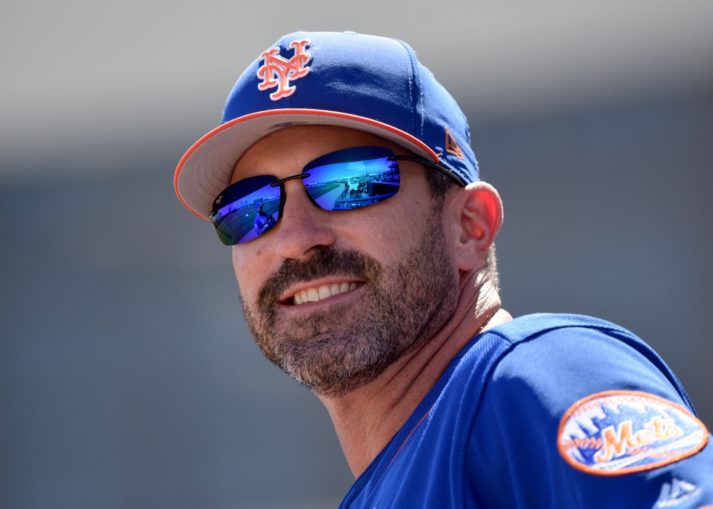
MMO: There’s been a debate for years now on how much value a manager has in terms of wins and losses each season for his club. You surmise that the behind-the-scenes work might be just as important if not more than the on-field tactics for the role of a manager. When fans assess the job a manager does, what should they be looking for, based on your research from the book?
Carleton: What we normally think about managers is in terms of the buttons they push. That’s who they pinch hit for, when they call for the hit and run when they call for a bunt, and how they arrange the lineup. We can look and see how much difference that makes. And you can go, well, okay, this is worth a couple of runs here and a couple of runs there. Over the course of a season I think if you look at the perfect manager and you took all the types of strategic things that he can do and you say he did them all perfectly, he’d be worth about a win and a half, or something like that.
I found if you take a look over the course of a season when we see plate discipline, we see that it kind of deteriorates a little bit. It’s not something you pick up with the naked eye, it’s something that you need a big data set to look at. If you look at how plate discipline deteriorates over the course of a season you see that some managers are actually better than others and it’s a pretty consistent effect in either stopping that decline or even holding the line or making their players a little bit better as the season goes on. With some managers, their guys just seem to drop out.
I was able to isolate that and a guy like Buck Showalter of the Orioles, who sometimes gets a bad rap from sabermetricians for his tactical stuff, is actually the best in baseball at preventing his players from kind of losing stuff to the grind of the season. He came out high flying on my calculations.
It turns out if you look at the spread between the best and the worst, again, it’s probably worth a win and a half, and it’s pretty consistent. I would say that some of that off-field stuff where you’re keeping guys motivated, even though it’s August and it’s hot and you’ve been living out of a suitcase for four months if you’re able to do that and keep the guys engaged and not kind of wandering off mentally, that’s most of what a manager does.
I think it’s something that we need to think about more and that sabermetricians have given a lot of short tiff to. When you look deep at the numbers, yeah, it’s in there.
MMO: One of the personal stories I loved was when you talked about the admissions worker you met with at Kenyon College (Carleton’s alma mater) named Mr. Jed. Can you talk a bit about your meeting with him and who he ended up becoming?
Carleton: Mr. Jed was a really nice guy. I was a senior in high school and I was living in Cleveland. My dad and I would go every weekend and we would go out to a college and take a look around. I went to Kenyon, which eventually became my alma mater, and it was on a Saturday and my dad called ahead. They had an admissions worker and it was Mr. Jed. So he showed us around campus and he showed us the bookstore, academic buildings, library, all of the things you do on a college tour.
We went back to the admissions office and we had a little interview with me. During the interview, we started talking about baseball. In a moment of self-disclosure on his part, he said that he was really hoping that at some point he could work for a baseball team. I thought that’s really cool, I kind of have that same dream. I was just thinking this is the nicest guy named Jed that I had ever met.
About 10-12 years later I was reading a story and it was that the Cubs had hired Jed Hoyer to be their new general manager. I was flipping through and reading it and it mentioned Hoyer’s first job out of college was as an admissions worker at a school in the middle of nowhere Ohio. I kind of went, huh? Huh? Oh! I started doing the math and going, well, let’s see, he graduated there, yeah that would’ve been about right and then I went to Google and sure enough, it was Jed Hoyer.
I met Jed Hoyer when I was seventeen, he was twenty-three and he was an admissions worker and we bonded over the fact that we both wanted to work for baseball teams.
Jed, if you’re out there, I’m happy you got your wish.
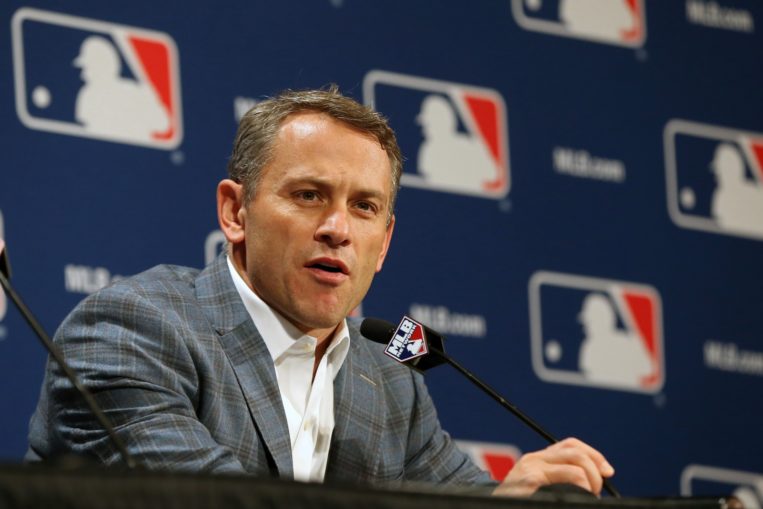
MMO: Did you ever get to meet Hoyer and talk to him about your initial encounter?
Carleton: You know I haven’t talked to him directly. We have a couple of contacts in common and a few of them have said that they knew the story and have told him that and he sort of kind of remembers me. [Laughs.] I don’t know if that’s true or not but I hope it’s true.
Jed, if you’re out there I’d love to sit down and talk about the good ‘ole days way back when 20 years ago.
MMO: You write about player development, but more specifically, the human development aspect of it. You write that you reached out to several clubs in 2014 on how they approach human development issues. Can you talk about some of your findings?
Carleton: It was a totally different way of doing research. I specifically wanted to not go do a big data dive into ten million lines of data, [where] I’m going to punch through and code and try to find some numbers that explain everything. I decided to pull from my clinical psych background and instead call some of these people and talk to them and see what comes up. I had a couple of questions that I would ask everybody and I would just let the conversation wander.
You’ve got these minor league players and they are incredibly valuable because of the way the salary structure is set up that you don’t have to pay them a whole lot. If they’re any good that’s a great source of value, everybody knows that. You’re always looking for young talent so how do you deal with him not only as a baseball player but as a human being? Realistically, once these guys take off their hats they’re just kids that are nineteen, twenty, twenty-one, wondering why am I in Iowa?
Some of them are in a new country, some of them are on their own for the first time, some of them are probably homesick. Then you think about issues like, what if he doesn’t know how to do his laundry? What if he doesn’t know how to put together a good meal plan? What if he doesn’t know how to cook?
These types of things you have to do when you’re an adult and things that all of us we’re learning around those times between 18-25, there’s professional literature around those times. It’s being recognized as a distinct period of time in one’s life called emerging adulthood. How do you help somebody through that time period?
I called a bunch of teams and I said, ‘Well, what do you guys do?’ They were all familiar with the problem and they had different ways of doing it, some of it the same. The idea was that you really want to build connective tissue so that if someone has a problem it can be identified and diagnosed. If the person’s reaching out for help he can be connected for that help if they need to stage some sort of intervention or something. You have a way of having a person that the player trusts be the one to reach out and say, “Hey, we’ve been noticing this about you, can we get you some help?”
They all have slightly different ways of doing it, and that’s okay. The point isn’t exactly how you structure it, and it’s not if you do it this way it’s worth 20 extra runs. It’s that you want it to build strong connective tissue, strong relationships between the players and the people who could help them.
I went to them and I said, ‘You know, you guys are sounding like a social service organization.’ If you think about community health and community health work – which is my job now – you want people who are outreach workers, you want people who are diagnosticians, you want people who can give good technical advice, but you have to build that relationship with the community in order to connect people to help.
We’re talking about twenty-something-year-old men, they’re not the kinds who are going to put up their hand and go, I need help, I need help. Our culture doesn’t validate that. In fact, our culture tells us the exact opposite.
That’s one of those things that I found was just an amazing line of inquiry so I wanted to write that up and put that in the book for everybody to see.
MMO: Overall what are you hoping readers take away from this book?
Carleton: I had this argument with my publisher, that I didn’t want the subtitle to include, “And How to Think About Baseball”. I didn’t want that. I wanted it to be, here are my thoughts, some of them are brilliant, okay, maybe only one or two of them are brilliant, and some of them are going to be lame and some of them you may already think like that. I just want people to have a different way of looking at a baseball game. [It] might not be the same way you look at a baseball game, it might not be the same way you’ve always thought of a baseball game, but here’s just a new thing to try.
I’m a numbers guy, I look at things through the numbers. I think there is a lot of wisdom to be gathered from them but I know not everyone’s there at that point to where they’re fully comfortable with that. Okay, cool. I really just hope people are willing to have a different way of looking at this. Maybe one or two of those things you can take into your own self. As you’re watching the game you can think of, now that we’re getting into this situation, I kind of wonder if this applies here? That’s really all I’m hoping for in this book, and hopefully, it’s a fun read on the beach or wherever you happen to be.
That’s my goal, to give somebody a different way that you may not have had to ever think about the game.
MMO: Thanks so much for your time tonight, Mr. Carleton. Congratulations on the book.
Carleton: Thank you so much.
Follow Russell A. Carleton on Twitter, @pizzacutter4
To order a copy of, “The Shift”, Click Here.



